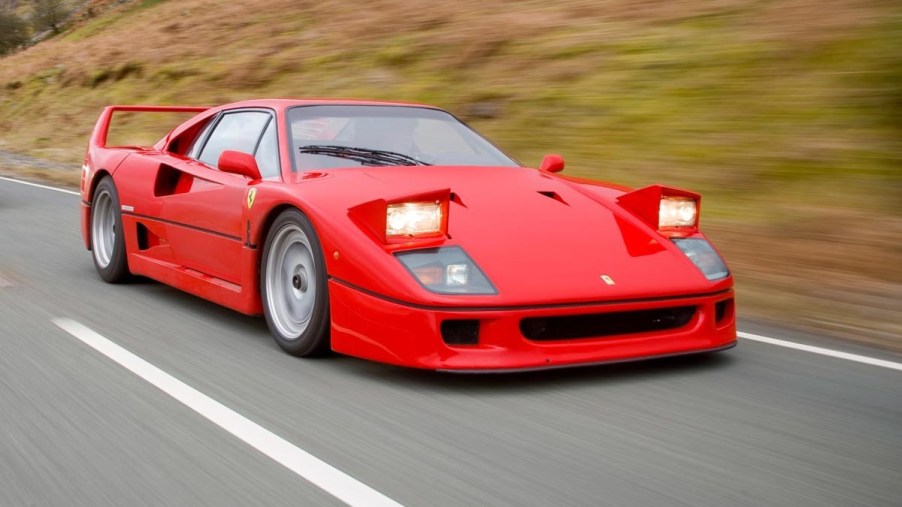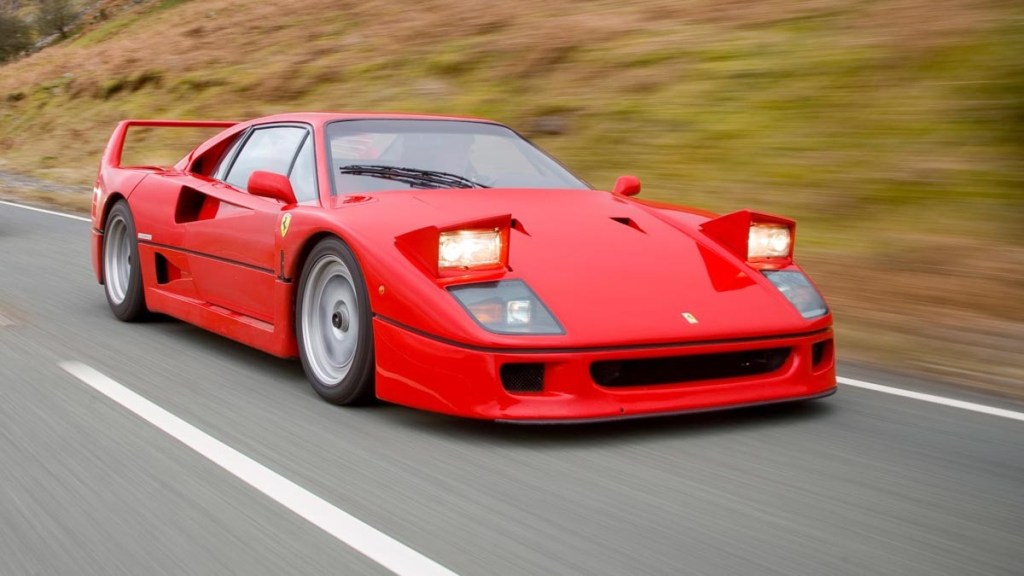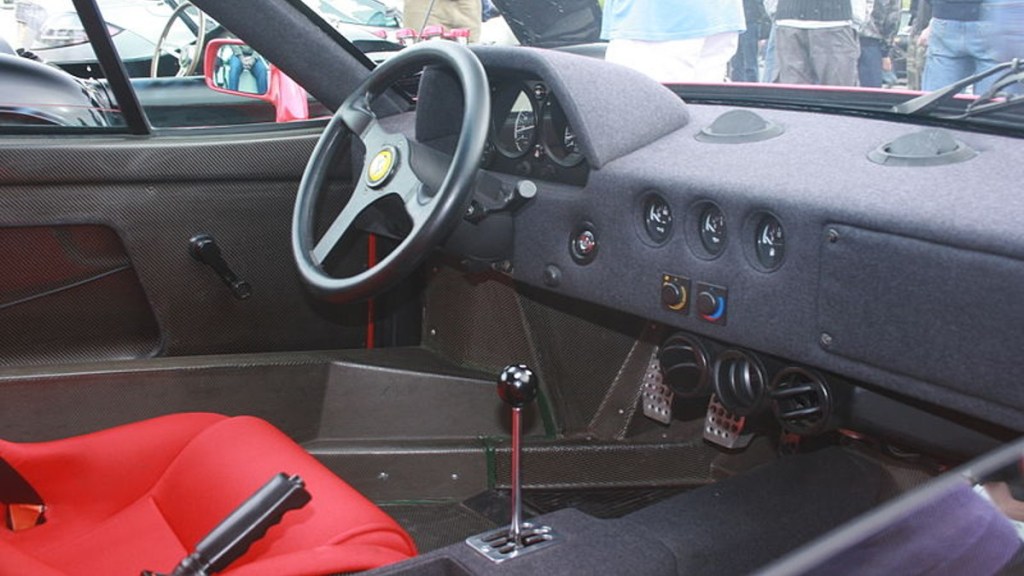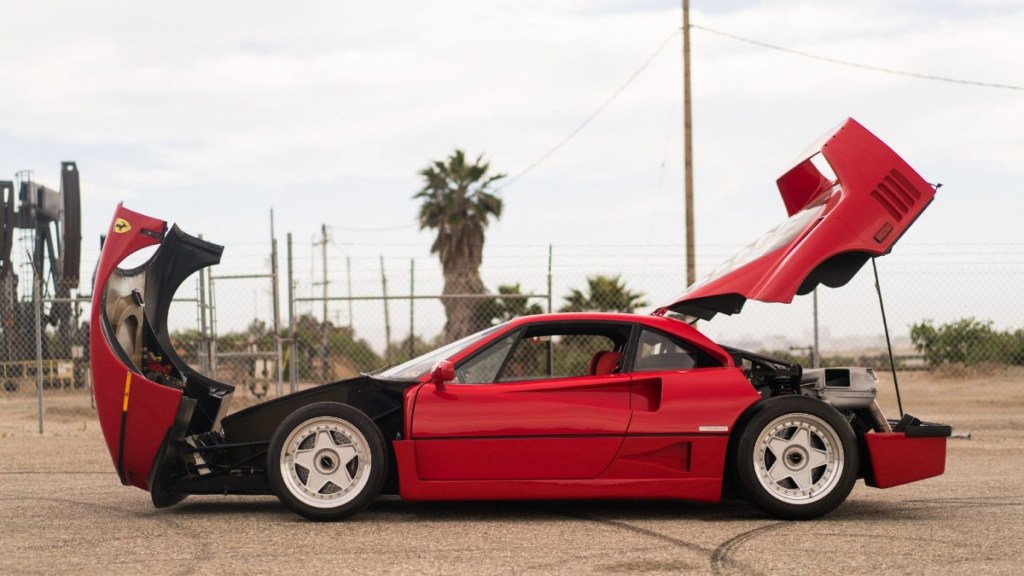
The Secret Ferrari F40: Unveiling the 1980s’ Racing Icon
If you saw the iconic Ferrari F40 on public roads today, you’d know the car made a wrong turn. First released in 1987, the F40 represented a return to the raw, unvarnished, elemental racing experience while being made for the street. This Ferrari sports car followed the classic formula of lacing comfort and reliability, but it sure is an incredible car to see and drive.
How uncivilized is the iconic Ferrari F40?

Unlike the soft materials and upscale cabins we see today, this 1980s Ferrari had very little to make the driver comfortable. Car and Driver tells us the interior was as stark and empty as any endurance racing car, but that was the point. Sure, Ferrari could have added some leather to the door panels, put carpeting on the seats, or given this racing machine a proper air conditioning system, but that would defeat its purpose.
Now that you have an idea of the rough and raw qualities of the Ferrari F40, here are some things about this incredible sports car you might not know.
The F40 name has meaning
Ferrari didn’t pick the name out of a hat; it stands for the 40th anniversary of the brand. Ferrari began operations in 1947, and the F40 was released in 1987, 40 years later. Instead of offering cosmetic tweaks to an already established car, Ferrari gave us a new performance powerhouse. How can we not love them for that?
Once in this car, you didn’t want to get out
Most drivers found it extremely difficult to get inside this Ferrari sports car. The lack of soft materials meant many found themselves hitting their shoulders, hips, and head on parts of the car while getting in and out. It took some practice to master entering the F40.
The Ferrari F40 doesn’t have door handles

Today, we’d think this car might have electronic handles with a sensor, but this was 1987. Without door handles for this iconic car, a driver or passenger had to use recessed latches that opened the doors from the outside. On the inside, a cable running diagonally in the hollow of the door opened the door. This is just another example of the sparse nature of the F40’s interior.
This car never got to take down its target Porsche
The iconic Ferrari F40 was made to go head-to-head against the Porsche 959 in FIA Group B. The F40 never got the chance after Group B racing ended in 1987. Instead of returning this car to the shed, Ferrari released it for road-going fun.
F40 design is as showy as expected

This Ferrari sports car has a clear plastic engine cover to showcase this gorgeous V8 at work. The body was designed by Pininfarina, which has been at the helm of many Ferrari designs. The flowing lines and clear engine cover make it impossible for onlookers to ignore the F40 no matter where they see it.
Only this Ferrari could hit 200 mph
The 200 mph mark might not mean today what it used to mean. At the time of the F40s release, this was the only street-legal car to surpass the 200 mph barrier. This achievement is thanks to the design and the impressive 2.9-liter twin-turbocharged V8 that pumped 478 horsepower and 424 lb-ft of torque through the 5-speed manual transmission.
The iconic Ferrari F40 was a super-secret car
Only those closest to Enzo Ferrari were involved in developing this sports car. Many top executives were in the dark until the car was finally revealed on July 21, 1987. The dramatic style and build still capture our attention today. This was certainly a secret worth keeping.




